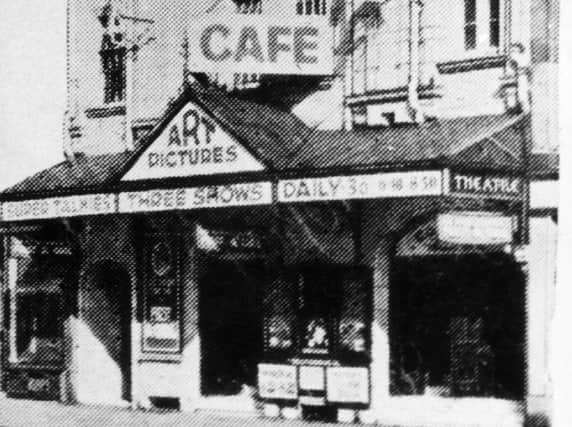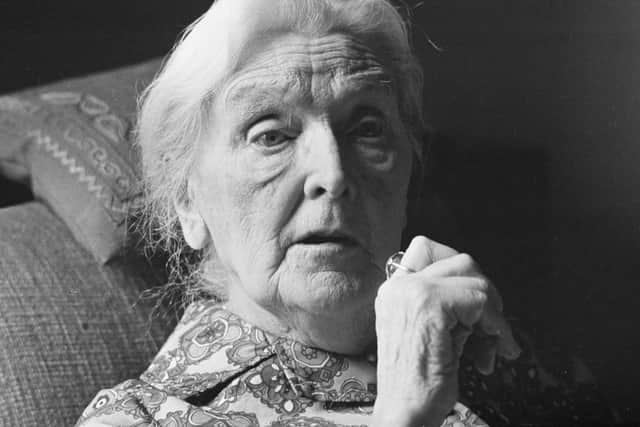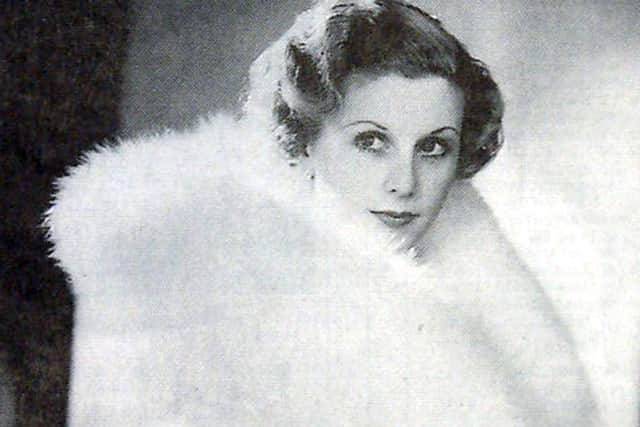Belle Chrystall - the Fleetwood actress who shared a stage with the stars


In the summer of 1931, a film company arrived in Blackpool to shoot scenes for a new talkie.
Hindle Wakes had been controversial as a play since it was first performed in 1912.
Advertisement
Hide AdAdvertisement
Hide AdThere had been two film versions as well, but this would be the first one made with sound.


The film follows Jenny, a mill-girl in the fictional Lancashire town of Hindle, who goes on holiday with her friends to Blackpool.
There, she meets up with a man named Alan and agrees to slip away with him to Llandudno, where, as the newspapers coyly put it, they ‘live as man and wife.’
But when Jenny and Alan return to Hindle and the prospect of marriage is raised, she declines.
Advertisement
Hide AdAdvertisement
Hide Ad‘You’re a man, and I was your little fancy,’ she tells him. ‘Well, I’m a woman, and you were my little fancy.’


Just as the mill scenes in the film were shot in a real mill, and the Blackpool scenes in the real Blackpool, so the actress playing Jenny brought something of her own to the role.
Belle Chrystal was barely 21, and her screen-name was the one she had been given by her parents.
Her father had been a surveyor in Preston, but after he died when Belle was only 10, she and her mother moved to Fleetwood, to live with relatives at Rossall Grange Farm.
Advertisement
Hide AdAdvertisement
Hide AdBelle had begun her education in a convent, and she continued it at Westbourne House, a girls’ school in Poulton.
It was in that town that she made her first cinema appearance, as part of a concert at the small, short-lived Picture House.
A keen horsewoman and swimmer, Belle excelled in the performing arts, and she took elocution lessons from Mrs GV Bailey of Poulton.
And then she won a place at RADA. Within a year, she was making her debut on the London stage, and within three years her debut in film.
Advertisement
Hide AdAdvertisement
Hide AdWhen Victor Saville, the director of that first film, was given Hindle Wakes, he received a letter from Belle in which she implored him to give her the lead role. She had read the play back in Rossall, she said, and had always wanted to be Jenny.
The part of her mother, meanwhile, would be played by Sybil Thorndike, already a grande dame of the theatre, who had actually appeared in the very first performances of Hindle Wakes.
Belle described her as ‘the most charming woman I have met on the stage,’ while Dame Sybil would return the compliment.
‘A clever little girl,’ is how she described Belle, ‘and a good little worker.’
Advertisement
Hide AdAdvertisement
Hide AdBelle Chrystall was petite, brown-haired and fresh-faced, and she had dark, expressive eyes.
Thanks to Mrs Bailey, she was also well-spoken. ‘Although she hails from Fleetwood,’ one magazine noted, ‘she has no trace of an accent.’
The cast and crew of Hindle Wakes arrived in Blackpool after filming on a specially built set in London, and at Horrocks’s Mill in Preston.
And has it had been four years earlier, for the most recent silent version of the film, the Pleasure Beach was pressed into service once again.
Advertisement
Hide AdAdvertisement
Hide AdFilming there took place at night, under twinkling holiday lights.
Nearly two hundred visitors had been recruited as extras, and many of them were dressed in flannels and berets or summer dresses.
Particular care was taken with a scene in which Jenny and Alan ride on the Big Dipper.
And Belle and her co-star John Stuart – who had played the same role in the 1927 silent film – were required to go round and round, up and down, for several hours.
Advertisement
Hide AdAdvertisement
Hide AdAs they did that, a cameraman tried to film them from the seat in front.
He was facing backwards, of course, and fastened to the carriage by a leather strap, to prevent him falling out. Victor Saville, meanwhile, was barking his instructions through a bullhorn, looking splendid in plus-fours, and chomping on a large cigar all the while.
Filming went on until long after the last tram had departed, and many of the extras found themselves having to walk back to their homes or their digs. Belle, though, said she enjoyed the experience so much she and Mr Stuart had several more goes on the Big Dipper after the cameras stopped rolling.
Hindle Wakes was given a special premiere in London, with the London Symphony Orchestra engaged to play for the guests.
Advertisement
Hide AdAdvertisement
Hide AdAfterwards, in a reflective mood, Belle told the man from the Sunday Express that when she was a nobody, nobody would consider her for film parts, but that now she had appeared on the screen, they were falling over themselves to hire her.
The film received excellent reviews. The Daily Mail said it was ‘an outstanding picture,’ and the Sunday Dispatch called it ‘rattling good entertainment.’ And southern newspapers praised it as much as northern newspapers, even if some of them also thought it necessary to explain to their readers just what ‘wakes’ weeks were.
And Belle herself was praised to the skies.
They called her ‘flawless’ in Dundee, and ‘a new star in the film firmament’ in Wrexham.
And when, in April 1932, Hindle Wakes came to the Art Pictures in Fleetwood, people queued all the way down Lord Street to see it.
Advertisement
Hide AdAdvertisement
Hide AdThe first showing took place on Belle’s birthday. Her mother and aunt were in the audience that night, and though the birthday girl herself couldn’t be present, she sent a letter to be read out by the mayor.
‘I feel rather nervous of my home town seeing the film,’ Belle wrote, ‘as I am particularly anxious they that they should like it. I hope it will not in any way disappoint them.’
The people of Fleetwood were not disappointed by Hindle Wakes.
In fact, they gave it a rapturous reception.
The film would return to the town in August, this time at the Pier Pavilion (which liked to call itself ‘the Cinema over the Sea’.)
Belle Chrystall had become a genuine star.
Advertisement
Hide AdAdvertisement
Hide AdHer next role, perhaps inevitably, was in Hobson’s Choice. And after that, she appeared alongside Flora Robson, Jessie Matthews and Robert Newton.
Her name was mentioned in gossip columns with the likes of Gloria Swanson. And when her picture was printed in The Tatler it was next to one of Lupe Velez.
In 1937, Belle made the film for which she is now perhaps best remembered.
The Edge of the World was directed by Michael Powell and is considered his first masterpiece.
Advertisement
Hide AdAdvertisement
Hide AdIt is set on a remote Scottish island, which it portrays as a brutal but beautiful place.
And it observes the destruction of the island’s community as its younger members leave for the mainland one-by-one.
Filming lasted for more than four months, during which time Belle and her co-stars had to endure difficult conditions.
There were few home comforts. They often ran out of fresh food, and they had to bathe in a tin bath.
Advertisement
Hide AdAdvertisement
Hide AdGales and fog had to be contended with. And the huts in which many of them lived were forever blowing away.
Belle, though, was undaunted. ‘We were never in any real danger,’ she said.
She would appear in 19 films in total, all but two of them in the 1930s.
She married just after the Second World War, when she was 36 years-of-age, and she gave birth to a daughter two years later.
Advertisement
Hide AdAdvertisement
Hide AdShe was the face of ‘Lux’ soap and then, during the 1950s, a mainstay of BBC radio plays.
And her home was a mansion flat overlooking Regent’s Park, which was a long way from Rossall Grange Farm.
She could afford to be philosophical. ‘I adored my career on screen, and the adulation it brought me,’ she said, ‘but it was no substitute for marriage and a family.’
But there might have been another reason for Belle Chrystall’s early departure from the movies.
Advertisement
Hide AdAdvertisement
Hide AdBack when Hindle Wakes was doing the rounds and she was being interviewed by a reporter, he asked whether it gave her a thrill to see herself on the screen. ‘It does,’ she replied, briskly. ‘But the thrill wears off.’